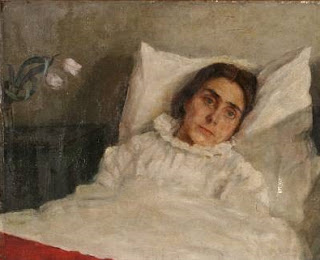A single mother running from her past and a viscount running from scandal meet in the rough and tumble gold rush town of Barkerville. (Available at your favourite online store HERE.)
*****
Four years ago, my wonderful publisher BWL Publishing
invited me to participate in a project in honour of Canada’s 150th
birthday. The Canadian Historical Brides Collection is comprised of twelve
books, one for every province and territory and each book is the story of a
bride who contributed to the building of Canada. Our only stipulation was that
the book had to be a blend of fact and fiction.
(You can find the entire collection on the BWL Publishing website HERE)
Each participating author could choose which province they
wanted to write about and I was lucky enough to snag British Columbia. I say
lucky, as British Columbia is one of our favourite vacation destinations and it
wasn’t too difficult to come up with a location in which to place my story. Eventually
I decided on the ghost town of Barkerville that sprang into existence during
the Cariboo gold rush. My husband and I have visited there a couple of times
over the years and I thought it would be a wonderful setting for the story of
Rose and her little girl Hannah, and Harrison.
After gold was discovered in 1861 in Williams Creek in the
Cariboo, thousands of men and women made the trek up the Fraser River, through
the Fraser Canyon, north to what is now Quesnel and from there east into
Barkerville. At one time, this town was thought to be the largest settlement
west of Chicago, with an estimated population of 10,000! With such a large
influx of people, in 1861 the Royal Engineers were given the task of building
the Cariboo Road. By 1865, the road made it possible for mule trains, freight
wagons and stage coaches to serve central British Columbia. When completed, it
was considered one of the wonders of the world. Today you can still see remnants of the road just outside of Lytton.

As an author of one of the Canadian Historical Brides
books, I had to incorporate real people so I did. ie Wa Lee, who gives Rose a
job in his laundry, Judge Begbie, (known as “The Hanging Judge” and doesn’t
that tweak your interest!), Madame Fannie Bendixon, the hotelier and saloon
keeper (who may or may not have run a brothel!) who also offers Rose a job, Dr.
Wilkinson who treats the injured leg of Rose’s daughter Hannah, and Wellington
Delaney Moses, the barber, because Harrison needed a shave after being out in
the gold fields.
I’ve been to Barkerville so I wanted to mention the lonely
grave you drive past on your way in from Quesnel. Here is Rose’s impression as
she passes by:
The wagon slowed as the road neared a fenced grave, enough
that Rose could read the headboard: Charles Morgan Blessing.
“Lonely spot to be buried,” Harrison commented and he
doffed his hat as they drove past.
Rose nodded. “It is.” A chill tiptoed down her back at the
forlorn sight, a reminder of the fragility of life in this wilderness. She
craned her neck for one last glimpse before the road twisted away.
I was also quite taken with the wooden sidewalks so of
course I had to mention those as well:
“Looks like we’ve arrived,” said Harrison as a cluster of
buildings came into view. Once again the mules, sensing the end of a long day,
picked up their pace and the wagon bounced and rattled down the last little bit
of the Cariboo Trail.
Rose hadn’t known what to expect but her first view left
her numb. This was Barkerville? The town that gold built? This jumble of
wooden, mostly single story buildings tottering on stilts alongside a wide,
muddied creek? Surrounded by steep hills stripped bare of trees? How unattractive,
brutally so.
The road through town was in poor shape, rutted and puddled
with patches of drying mud. In consideration for pedestrians, raised wooden
walkways fronted every building like planked skirts. Rose could only conclude
the creek must flood frequently. Her poor boots, already soaked through once
since embarking on the trip, would certainly be put to the test here.
The closer they came, the more her heart sank. What had she
got themselves into?
Here are a couple of pictures of Barkerville today. The second picture gives you a good idea of the wooden sidewalks.
As an author of historical romance, it’s my job to place my
readers in the proper time frame and I hope I’ve accomplished that in
Barkerville Beginnings!




















































.jpg)
